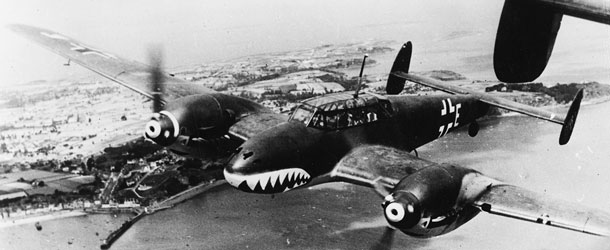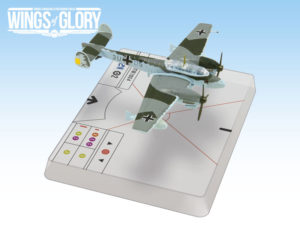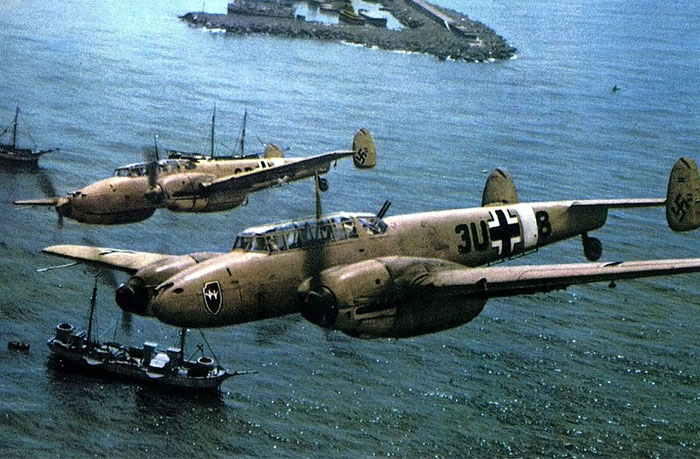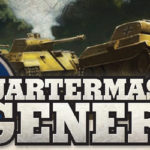The Bf.110 served with success in the early campaigns - Poland, Norway,France - but its lack of agility in the air was its primary weakness. During the Battle of Britain, this shortcoming became evident and some Bf.110-equipped units were withdrawn from the battle after very heavy losses. Redeployed as night fighters, the Bf.110 enjoyed a successful period, and werit was also used as an air superiority fighter and strike aircraft in other theatres.
The Bf.110 was a dominant force in the skies throughout the 1939, particularly during the invasion of Poland. The Bf.110 could bring to bear its formidable array of two 30mm cannons and two 7.92mm machine guns onto a target and annihilate it with great ease. The rear gunner cockpit was armed with an additional 2 x 7.92mm machine gun assembly that provided a rear-guard defensive armament.
After the success over Poland, the Bf.110 entered full-scale wartime production, with 100 aircraft delivered per month. This aircraft had an important role also during the Norwegian campaign and the Battle of France.
By 1940, however, the Bf.110 limitations in maneuverability were exposed during the Battle of Britain. As a long-range escort fighter, it was not able to face the nimble Hurricanes and Spitfires, and rather than protecting the bombers under escort, the Bf.110C formations usually found that they were hard put to defend themselves. They had to rely on the single-seat Bf.109E fighters for their own protection.
After its failure in the Battle of Britain, the Bf.110C was relegated to a night-fighter role, after less-than-stellar performances as a true bomber and reconnaissance platform. The night-fighting Bf.110 would eventually come into its own once again with the introduction of radar. Night-fighting Bf.110's could once again take to the skies with confidence and wreak havoc on incoming bomber formations in the blackness of night.
During the Balkans Campaign, North African Campaign and on the Eastern Front (Russia), the Bf.100 rendered valuable ground support to the German Army as a potent fighter-bomber (Jagdbomber or Jabo). When it was developed into a formidable night fighter, it became the major night-fighting aircraft of the Luftwaffe.
The Bf.110 series would see action throughout the entire war, generating a decent list of air combat aces along the way. Though it has suffered from its share of developmental and engineering drawbacks, the Bf.110 system eventually found its role in the global conflict, becoming the most important fighter/bomber hybrid of the Third Reich.
In the last year of Second World War, the Bf.110 was used in daylight fights, but it was no match for the Thunderbolts escorting American B-17 and B-24 bombers over Berlin. Despite that, it flew until the final defeat of Germany in 1945.
In total, 6,170 Bf.110 were produced, in several variants. Besides the Lutwaffe, some of these aircrafts were also operated by the Royal Hungarian Air Force, Regia Aeronautica (Italy), Royal Romanian Air Force and Air Force of the Independent State of Croatia. The Soviet Air Force also operated a few captured Bf.110s.
In the next article, you will learn about the history and the pilots of the three Messerschmitt Bf.110Cs presented in the WW2 Wings of Glory Airplane Packs.
Information sources: Wikipedia, The Aviation History Online Museum, Military Aircraft, Military History of the 20th Century, ArmyPhotos.net.












Follow Us on